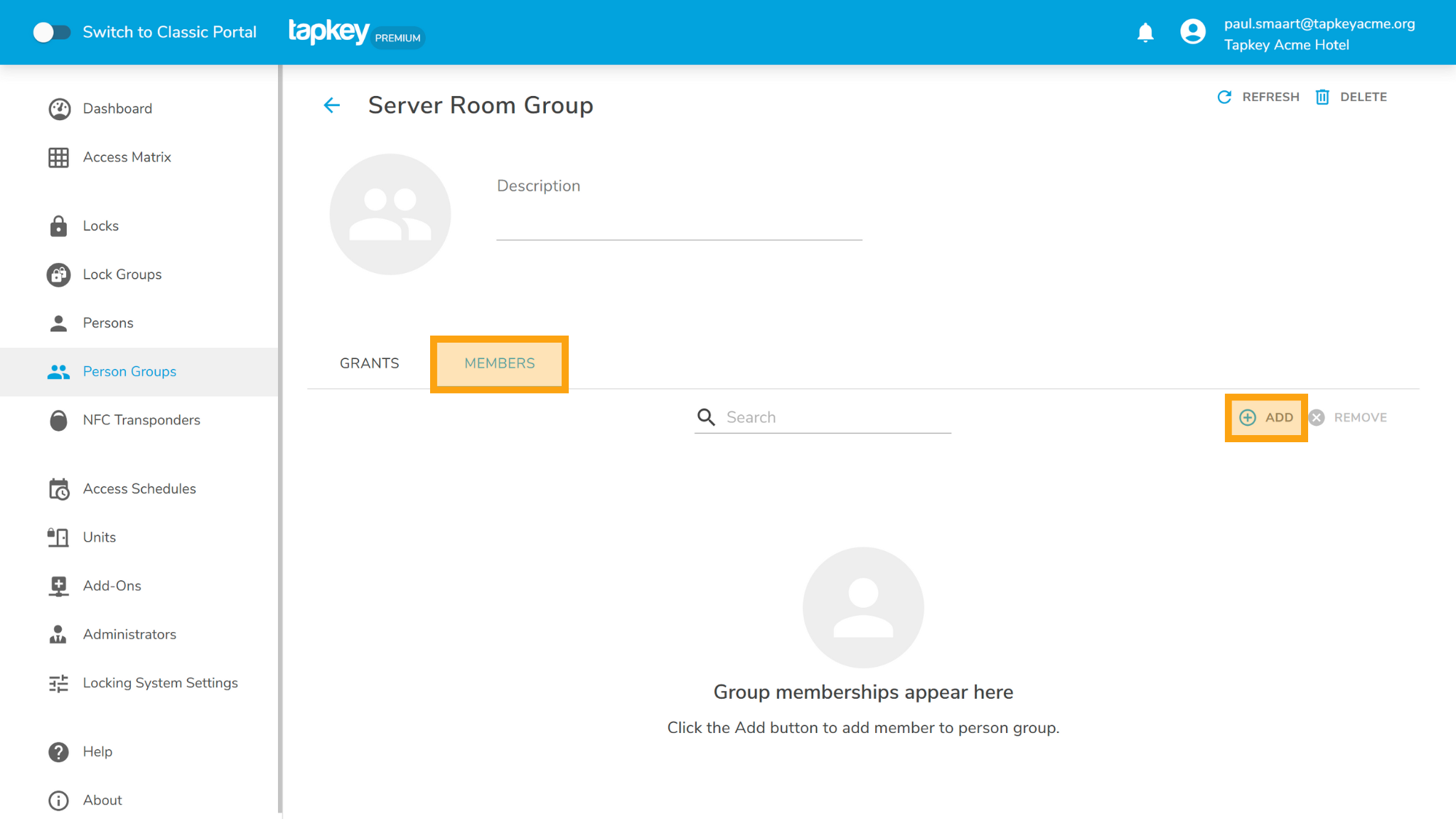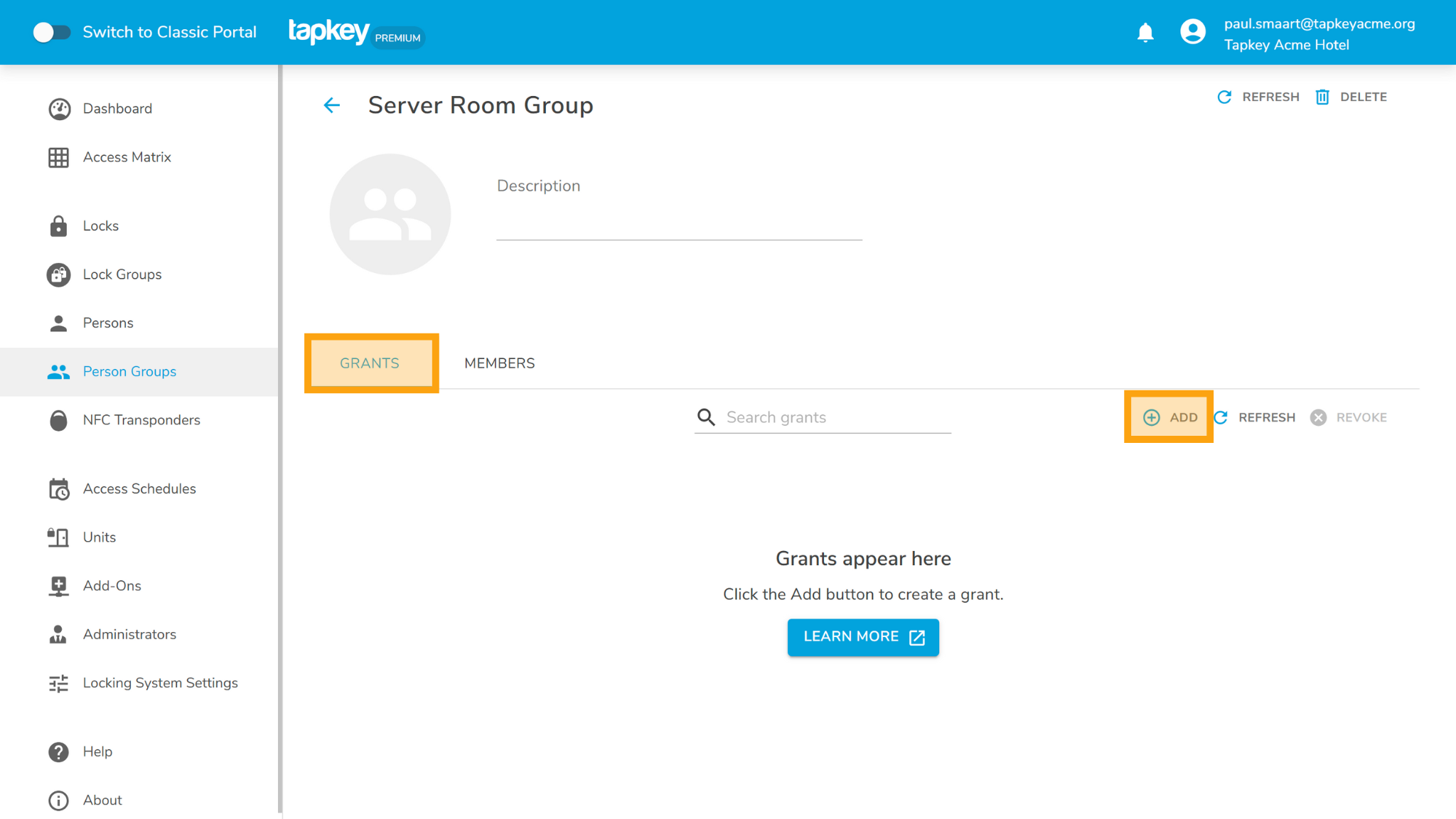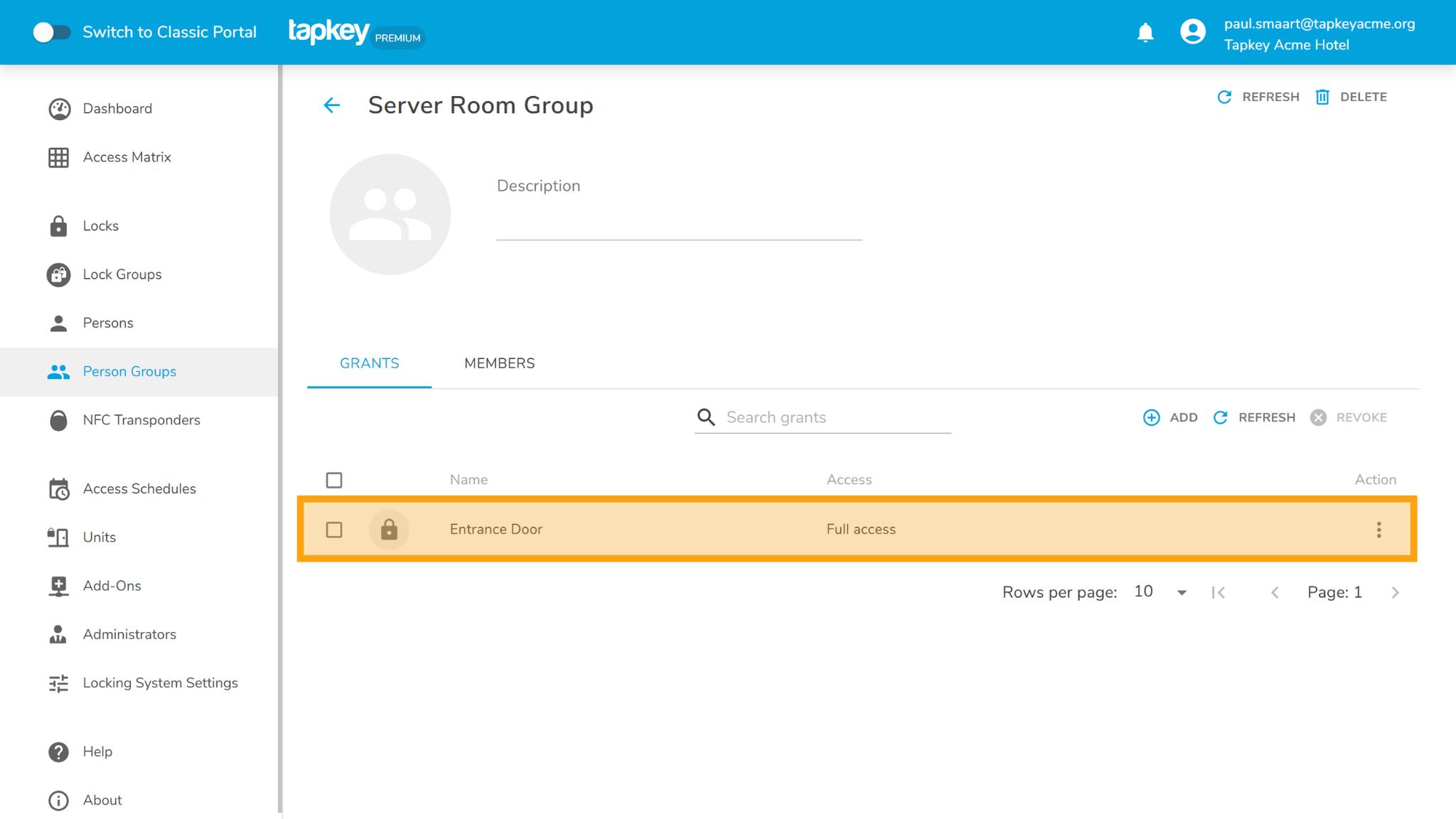Person Groups in Tapkey: How They Work and Why You Should Use Them
The Person Groups functionality in Tapkey allows administrators to efficiently manage access by grouping persons (referred to as "members") into distinct user groups. This feature is ideal for customers who need to organise multiple users with similar access needs, making access control simpler and more scalable.
This article will guide you through:
1. What are person groups?–Understand the basics of Person Groups and how they simplify access management.
2. Benefits of person groups–Learn the key advantages, including streamlined permissions and scalability.
3. How to create person groups –Step-by-step instructions for setting up Person Groups in Tapkey web portal.
4. Managing members within a person group–Tips for adding or removing members and adjusting permissions as needed.
5. Managing grants within a person group–This section explains how to assign and manage grants for a person group.
6. Best Practices for using person groups–Insights to help you effectively organise and maintain groups for optimal access control.
1. What are Person Groups?
Person Groups are collections of smartphone users who can be managed together. Instead of assigning access permissions individually, administrators can grant permissions to a group, which automatically applies to all its members. This approach simplifies access management, especially in organisations with a large number of users or departments.
An example: All employees with access to the main entrance form a user group and can unlock it with their smartphones. Another person group could consist specifically of IT staff who require additional access to the server room.
2. Benefits of Using Person Groups
- Centralised Management: Set permissions for all users in a group at once, saving time and reducing errors.
- Flexible Access Control: Easily add or remove members from groups to adjust access as needed.
- Scalability: As your organisation grows, Person Groups streamline the addition of new persons by automatically assigning the correct permissions through group membership.
3. How to Create a Person Group
Note: Person Groups management is not available in the Tapkey app. It is required to use the Tapkey web portal.
-
Navigate to Person Groups in Tapkey Web Portal:
- Log in to your Tapkey account and go to the "Person Groups" section.

2. Create a New Group:
-
- Click on the “ADD” button.
- Enter a name for the group that clearly identifies its purpose (e.g., "Office Staff", "Maintenance Team"). In this screenshot: "Server Room Group"


4. Managing Members within a Person Group
- Add Members: To add new users, simply go to the group details page, open the MEMBERS tab and select the Smartphone User from the list of registered users or enter a new on. The “ADD” button allows to add new members. Once added, each member will inherit the group permissions.



- Removing Members: To remove a member, click on the ellipsis button and then select “REMOVE”.
5. Managing Grants Within a Person Group
-
Assign Access Permissions to the Group:
Go to the "Grants" section and assign the necessary access rights to the group. All members will automatically receive the assigned permissions.



6. Best Practices for Using Person Groups
- Organise by Role: Group users based on their roles or departments to make it easier to apply role-based permissions.
- Regularly Review Groups: Periodically review group memberships and permissions to ensure they remain aligned with the current access requirements.
- Use Clear Group Names: This helps administrators easily identify and manage groups, especially in larger organizations.
Was this article helpful?
That’s Great!
Thank you for your feedback
Sorry! We couldn't be helpful
Thank you for your feedback
Feedback sent
We appreciate your effort and will try to fix the article